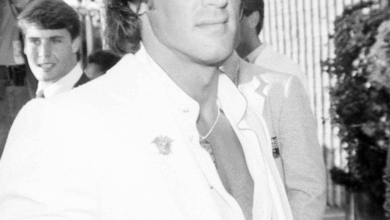The Dark Side of Marilyn Monroe’s Mental Health Struggles: Locked in a Padded Cell for Days
OPINION: This article may contain commentary which reflects the author's opinion.
Marilyn Monroe, the enduring symbol of Hollywood glamour, harbored a deeply troubled inner world hidden behind her dazzling smile. In 1961, amid a swirl of personal and professional turmoil—including her recent divorce from Arthur Miller and the poor reception of The Misfits—Monroe sought refuge in what she believed would be a restorative psychiatric clinic stay. Instead, she faced one of the darkest episodes of her life.
Admitted under the pseudonym “Faye Miller” to New York’s Payne Whitney Psychiatric Clinic, Monroe expected a temporary “rest cure” to ease her emotional burdens. But what awaited her was far from sanctuary. Placed in a cold, isolated padded cell, she was cut off from the outside world and exposed to distressing scenes of fellow patients in despair. The environment, marked by harshness and indifference, stripped away any semblance of comfort or empathy.
During her three-to-four-day confinement, Monroe suffered withdrawal symptoms with no access to her medication or personal belongings. Her desperation to signal her distress—slamming a chair against the glass—was misread as instability, resulting in even stricter isolation and threats of physical restraint. This dehumanizing experience deepened her anguish, leaving scars that would linger for the rest of her life.
After her release, Monroe courageously detailed the ordeal in a six-page letter to her psychiatrist, Dr. Ralph Greenson. She condemned the clinic’s conditions as “inhuman” and “archaic,” vividly capturing the alienation and helplessness she endured. Despite the trauma, Monroe’s words conveyed remarkable strength—a fight to reclaim dignity in a system that often failed its most vulnerable.
Her ex-husband, Joe DiMaggio, played a critical role in rescuing her from this nightmare. Upon learning of her treatment, DiMaggio intervened, facilitating her transfer to Columbia Presbyterian Medical Centre where she received more compassionate care. His actions, driven by enduring love and concern, prevented further harm during this fragile time.
This painful chapter underscores the hidden struggles beneath Monroe’s iconic image. The trauma she faced at Payne Whitney undoubtedly contributed to the fragility that shadowed her life thereafter. Yet her ability to articulate her suffering has inspired generations to advocate for mental health awareness, empathy, and respect.
Marilyn Monroe’s legacy is not just one of star-studded fame, but also of resilience and humanity. Her story reminds us that behind even the brightest stars can lie profound darkness—and that mental health deserves compassion, understanding, and above all, dignity.



